How to choose kitchen worktops – everything you need to know
The workhorse of any kitchen, worktops need to be tough and practical, as well as stylish
When it comes to kitchen renovations cabinetry may feel like the main style decision, but worktop choice is just as important – if not more so. Because in addition to looking good a kitchen worktop idea has to be fit for the job. It’s vital to make the right decision so your kitchen idea is able to withstand the elements of everyday usage – from food spills and water marks to heat damage.
Worktop materials have changed quite radically in the last few years, offering a vast choice across all budgets. Technology has given us super tough materials that are virtually indestructible options for the busiest of family homes. Meanwhile, the trend for open-plan kitchen layouts and living room style in kitchens has led to the introduction of luxe materials for those able to provide them a little TLC.
What is the best kitchen worktop material?
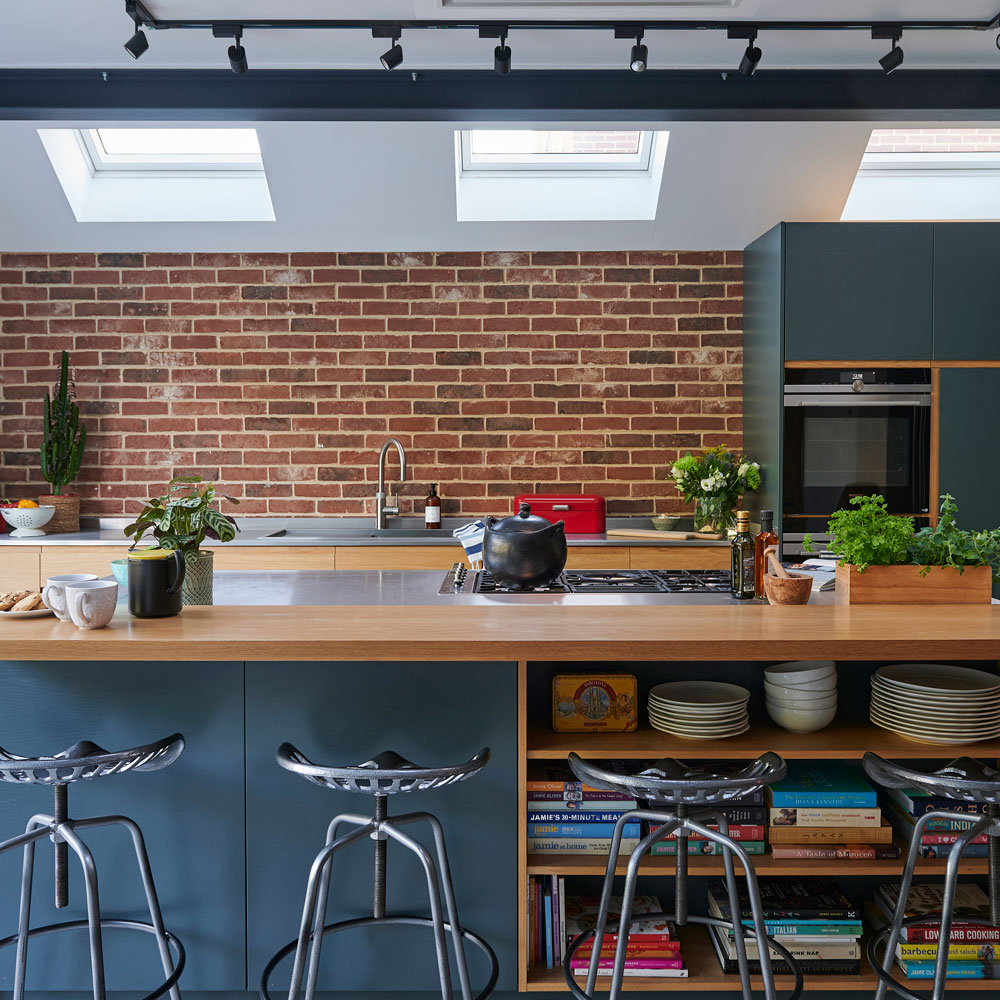
The most popular materials for kitchen worktops – laminate, granite, solid wood, Quartz, glass, composite stone and stainless steel – have different advantages. So it's important to look at all the factors involved, to ensure you tailor your worktop to your needs.
'Investing in your worktop is essential, as it’s one of the most hardwearing areas in your kitchen space, so it can be difficult to choose between style and practicality' says Wren Kitchens Design Director, Darren Watts.
'A solid timber worktop looks organic and is durable. However, if you’re looking for something with a bit of sparkle that will stand the test of time, our Xena Quartz worktops are both easy to clean, and stain and scratch resistant.'
Worktops are available at a variety of price points, a major factor when it comes to decision making for most households. From cheaper laminates to expensive granites, what you choose is often be driven by how much you have to spend.
Many of the made-to-measure worktops – marble, concrete, Corian – are pretty costly and can prove unrealistic if you're on a budget. Try opting for a quality look-alike instead. Pre-cut laminate worktops still provide gorgeous surface design and durability without the hefty price tag.
Kitchen worktop materials
1. Add warmth with natural hardwood
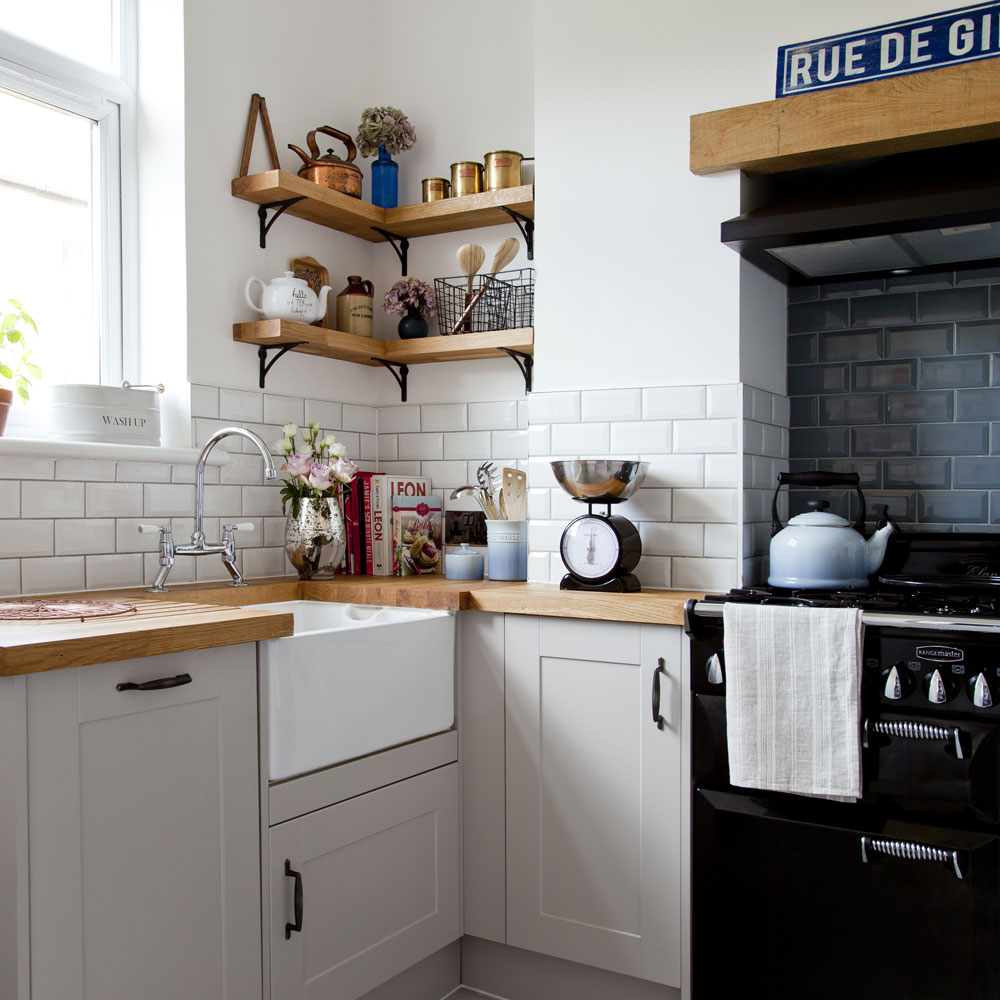
What is a hardwood worktop? A traditional favourite for its natural warmth and the character that comes as it ages, hardwood is preferred over 'soft' woods like pine for its strength. Popular choices of hardwood include oak, walnut and iroko. Always choose a sustainable hardwood, preferably from an FSC (Forest Stewardship Council) accredited source.
Hardwood worktops suit all kitchen styles. Hardwood can be incorporated into a contemporary scheme using glass or stainless steel to add a warm feel.
- Price: From approx £150 per linear metre.
- Best used for: Food preparation and dining areas, for example, islands and breakfast bars. Iroko and teak are ideal for using around the sink as they have a high oil content and are water resistant.
- How durable is a wood worktop? If hardwoods are properly sealed and maintained they will last for a long time, but don't use the worktop as a chopping board, or place hot pans directly onto the wood, as it can scorch.
- Flexibility and fitting Wood is very easy to cut, and is suitable for use in most situations.
- Do hardwoods require any initial treatments? Hardwoods require an initial programme of sealing using oil. Apply a coat once a day for the first week, then once a week for the next month, then once a month for a year.
- How do I look after a wood worktop? Wood does need a certain amount of upkeep. Avoid direct exposure to heat and prolonged soaking, especially by the sink and tap area, where you may prefer to install a wall-mounted tap.
2. Go for durability with composite worktops
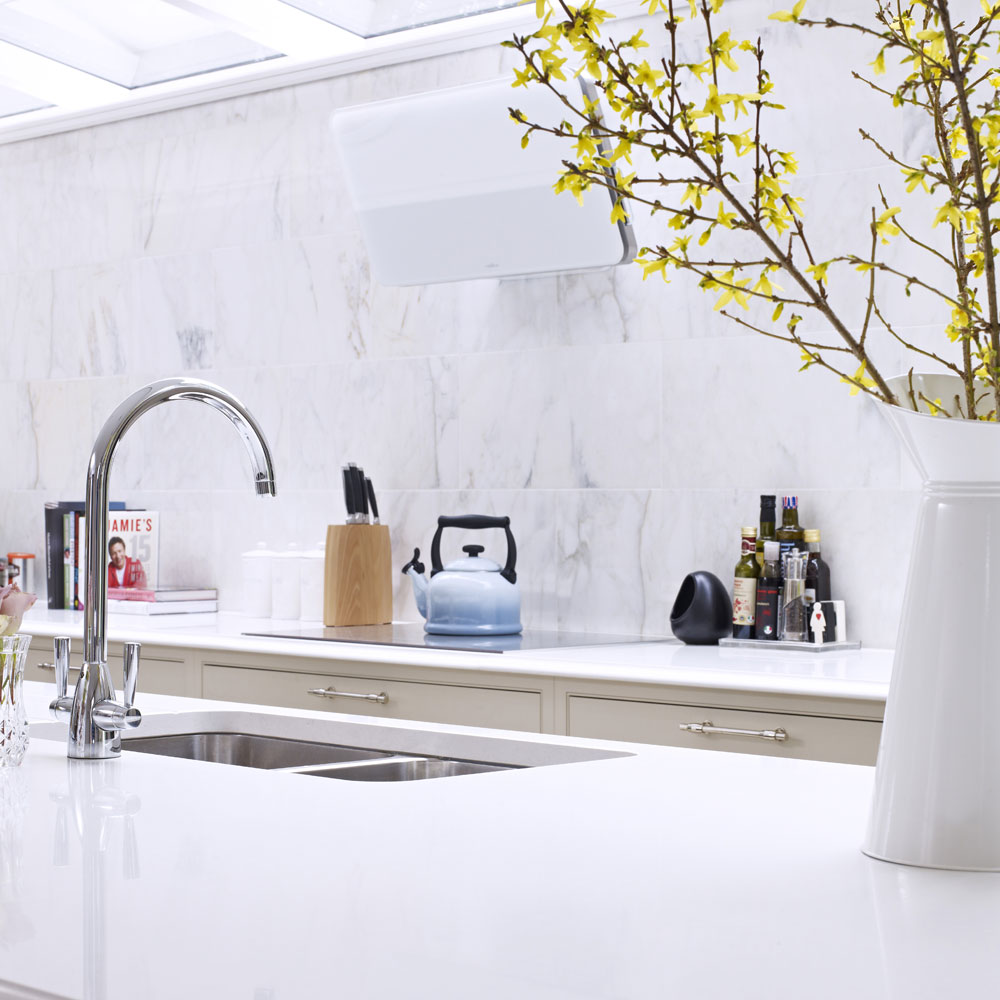
What is a composite worktop? Made from about 90 per cent natural quartz crystals mixed with a small percentage of binders, and referred to as both ‘quartz composite’ and ‘engineered stone’, this material is very tough, virtually non-porous and resistant to scratches, stains, heat damage and impact, and often comes with a long warranty.
It also offers consistent composition, so unlike natural stone, there won’t be variation in veining and colour shading. Dramatic colours such as dark grey and blue look fabulous in modern and contemporary kitchens. If your kitchen design idea is quite traditional, stick to neutrals such as cream.
- Price: From approx £300 per linear metre
- Best used for: This very practical and beautiful choice can be used anywhere, including next to hobs and around the sink.
- How durable is a composite worktop? Composite is very tough and more durable than many natural stones. As the colour runs right the way through the material, any scratches can be sanded out. In the very unlikely case that your composite surface is scratched, chipped or stained it can often be repaired by a specialist. However, it is easier to achieve perfect restoration with acrylic composites as scratches can be sanded out, while quartz is more likely to be filled and any polishing can leave a dull area.
- Flexibility and fitting: This worksurface can be thermoformed into different shapes without joints to create streamlined, seamless worktop runs. Fabrication is done by specialists and usually arranged by your kitchen supplier. Templates will be taken once the base units are in place and it can be one to two weeks before the worktops are ready to install.
- Do composites require any initial treatment? No
- Looking after a composite worktop: Wipe up spills to prevent marks. Keep clean with a soft, damp cloth and a mild detergent.
3. Choose granite worktops for luxury
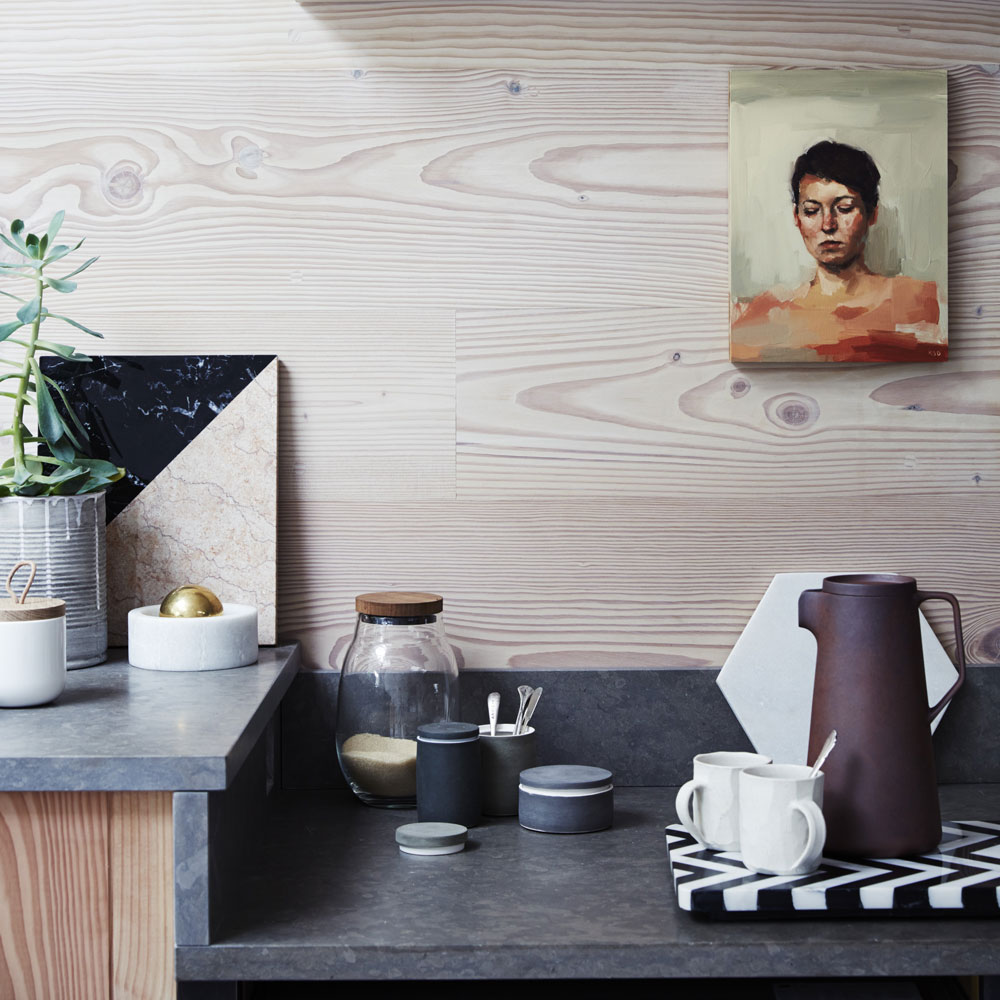
What is a granite worktop? For some, nothing beats the beauty of natural stone, its veining and colouring unique to each slab. Marbles are classically beautiful and luxurious, tend to be rarer and therefore more expensive.
Granite worktops are a luxury material that never falls out of fashion and suits traditional and modern styles. Choose from a classic polished finish, or a honed matt for a more contemporary look.
- Price: From approx £200 per square metre
- Best used: For any area of the kitchen, including around the sink and next to the hob or oven. A large expanse of glossy granite makes a striking island worktop
- How durable is a composite worktop? Granite is hard and resistant to heat and scratches, but it must be treated with respect to prevent damage. The best of all the natural materials, it can withstand high temperatures, is water resistant and impervious to most stains, but wine and citric acids must be cleaned up at once to avoid damaging the stone. and will usually need to be protected by a special sealant.
- Flexibility and fitting: With advances in modern technology, granite can be cut into a variety of shapes and sizes, although it is very heavy to transport and difficult to manoeuvre.
- Does granite require any initial treatment? Granite requires an initial sealing, and then another about 10 years later.
- How do I look after a granite worktop? One great thing about granite is that it's very low maintenance. You can clean it using a damp cloth and a mild detergent.
4. Get the look with laminate worktops
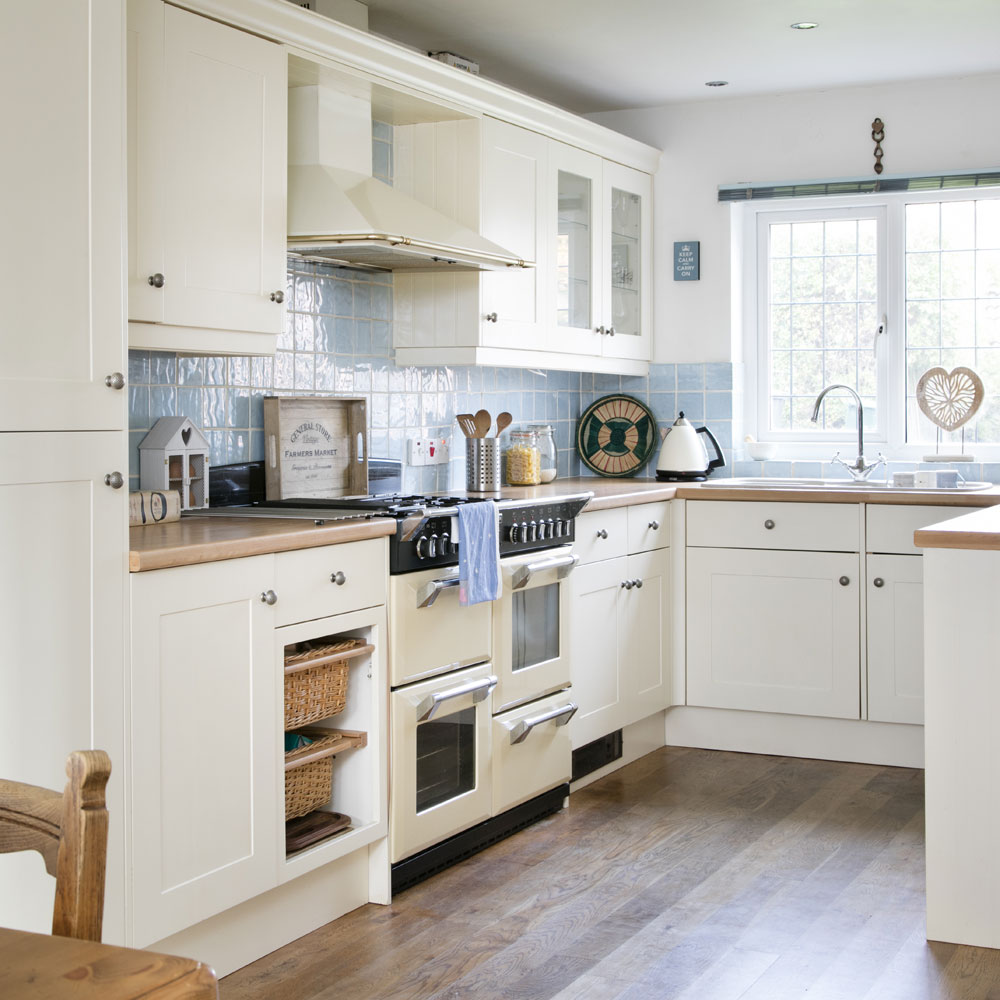
What is a laminate worktop? Long-considered the best budget option, laminates are non-porous, offer easy maintenance and come in lots of design and colour choices. Made by fusing multiple layers of impregnated paper under high pressure temperature, bonded to a substrate, they are resistant to impact, scratching and moisture.
Can accurately mimic other worktop materials, including granite, slate and wood, so will suit modern and traditional schemes.
- Price: From £30 per linear metre
- Best used: General usage, including food preparation areas, sink runs and around hobs and cookers.
- How durable is a laminate worktop? Resistant to most stains and chemicals, but not to heat or steam. Not suitable as a cutting surface. Choose a thicker, high-pressure worktop for greater durability.
- Flexibility and fitting: Laminate is one of the few materials that can be cut and fitted by a DIY enthusiast rather than a kitchen professional.
- Do laminates require any initial treatment? No
- How do I look after a laminate worktop? Laminate is very low maintenance. Clean with a cloth and mild detergent.
5. Consider quartz for antibacterial qualities

'Homeowners are increasingly using antimicrobial materials and surfaces such as quartz' explains Tom Howley, Design Director at Tom Howley bespoke kitchens. 'Quartz looks fantastic and its resilience makes it a popular choice for a kitchen worktop.'
'Quartz is perfect for kitchens as its non-porous texture doesn’t allow bacteria to grow. It’s easy to clean, making it less susceptible to staining and as well as being durable, quartz comes in a range of beautiful colours.'
- Price: From approx £200 per square metre
- Best used: On any surfaces where you prepare or store food, ideal choice for those looking for antibacterial qualities from a work surface
- How durable is a quartz worktop? Quartz is easy to clean and hardwearing.
- How do I look after a quartz worktop? Quartz is super low maintenance. Keep it clean using a damp cloth and a mild detergent.
6. Go organic with natural stone

A natural stone worktop is one of the most practical surface choice you can make, thanks to its high density and non-porous surface making it highly-durable to withstand any kitchen task. 'Lundhs Real Stone worktops are durable and distinctive.'
'Remaining in its complete natural state from quarry to kitchen, the material boasts high heat, water, scratch and UV and stain resistance as well as being incredibly easy to maintain' advises Hege Lundh.
'One of the key considerations to take into account when choosing a real stone surface for your kitchen is that each piece is unique and therefore can vary in its appearance. Whilst this is part of the beauty of opting for a 100 per cent real stone surface, it’s important to ensure you’re happy with the exact piece of stone your worktops will be made out of.'
- Price: From £200 per linear m.
- Best used: Around heat sources, such as hobs and ovens, thanks to its heat resistant qualities. From splashbacks to waterfall islands, there are a lot of ways to be creative with natural stone in the kitchen.
- Flexibility and fitting advice: Where you wish to use a stone worktop will affect how it is cut and installed. Being a 100 per cent natural stone that is completely resistant to water, natural stone can be used as an integrated sink, creating a seamless look. Other options include undermount or top mount.
- Does natural stone require any initial treatment? No
Hege recommends visiting a stone yard or stone merchants to make your choice. 'Not only will you be able to select the exact piece of stone that your worktop will be made out of but you will also be provided with the knowledge and expertise of the team to ensure you are selecting the best material and finish for your home.'
7. Streamline surfaces with glass worktops
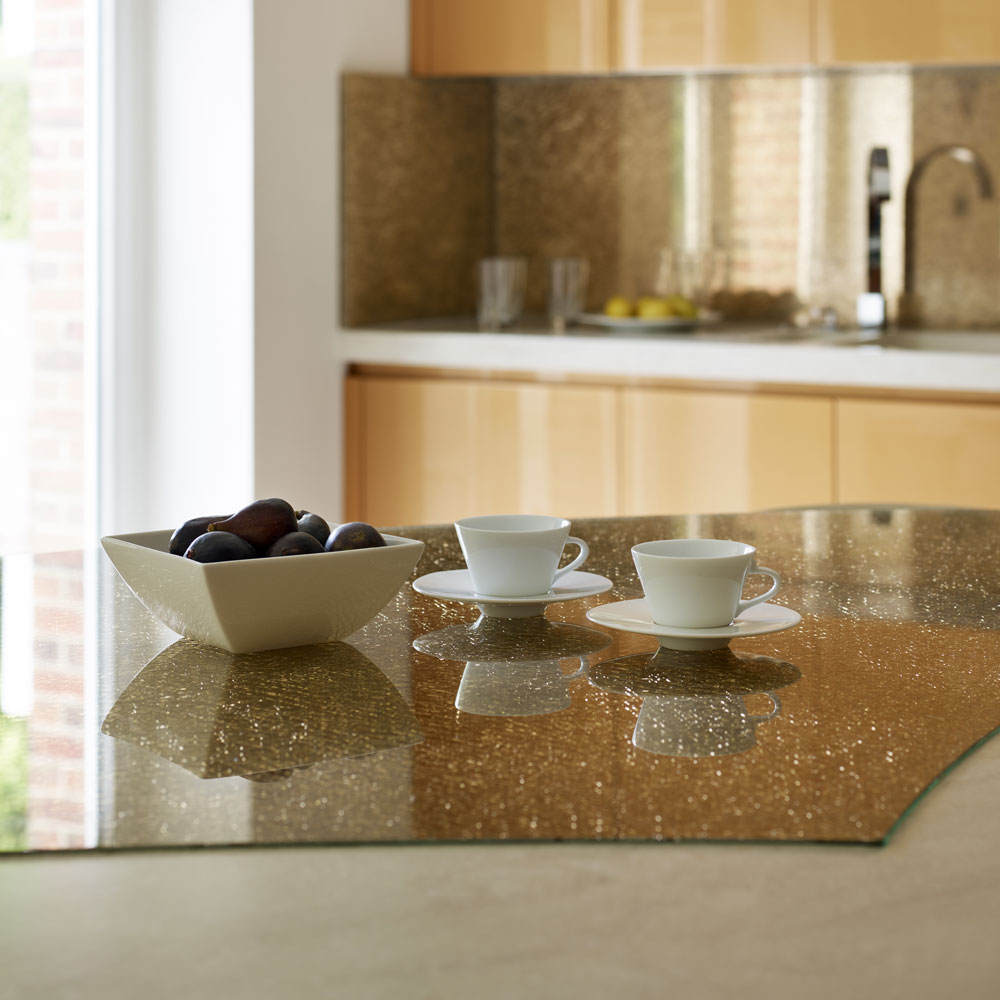
What is a glass worktop? Glass has long been a favourite with interior designers for the light touch it brings to a scheme as well as its reflective sheen that really helps boost light levels. Glass is a non-porous material that can withstand moisture and spills and splashes are easily wiped clean, making it a beautiful – and practical – solution for the kitchen.
- Price: From approx £300 per linear metre for a standard 15mm-deep surface.
- Best used: Around the sink or for focal-point breakfast bars. As it is a very reflective surface it is useful as a feature worktop in small kitchens to increase the feeling of space.
- How durable is a glass worktop? Glass for work surfaces is toughened to increase durability. Heat, acid and water resistant. Can be prone to scratches, but these can be polished smooth.
- Flexibility and fitting: Worktops can be cut to most shapes and can include cut outs for hobs and sinks.
- Does glass require any initial treatment? No
- How do I look after a laminate worktop? Needs frequent wiping to prevent water-marking, but is very hygienic due to the lack of joints and resulting dirt traps. Keep sparkling with a glass cleaner.
8. Corian and solid-surface worktops
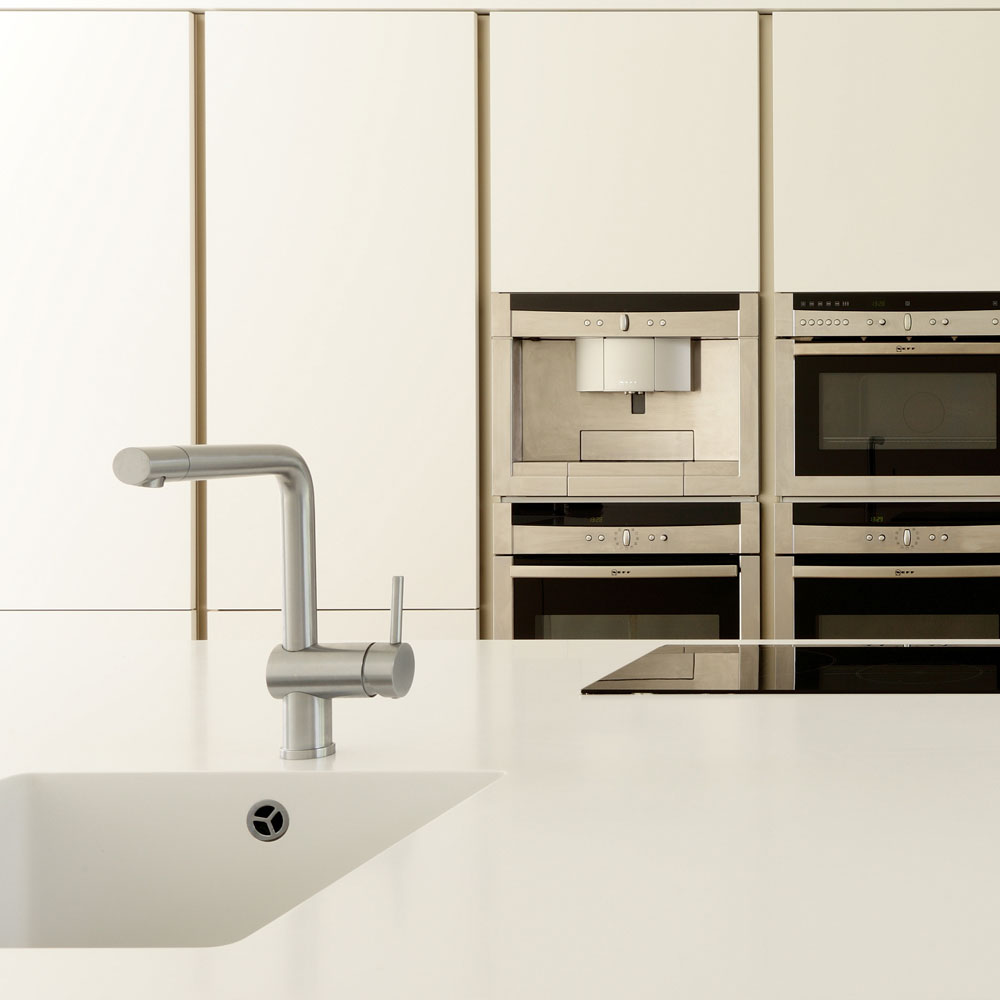
What is a Corian or solid-surface worktop? Made from a blend of acrylic resins, minerals and colourings, solid surfaces are warm to the touch with a natural lustre; they can be totally seamless too with one- piece, moulded sinks and splashbacks.
Suits most schemes. Available in a variety of colours - choose bright hues for modern kitchens, white for architectural, and any pale shades for traditional rooms.
Designs are often pioneering and the material can be thermoformed into fabulous, organic curves, slick, cantilevered breakfast bars and seamless wrap-around surfaces on islands. The material can be engraved, back-lit with LEDs and even fitted with built-in wireless charging for smart phones.
Corian is a particular brand and make-up of solid surface, meaning not all solid surfaces are Corian. Just like not all vacuum cleaners are Hoovers!
- Price: From approx £300 per linear m.
- Best used: In wet areas. Perfect for a seamless integrated sink and worktop run.
- How durable is a Corian worktop? Solid surfaces are stain and water resistant. They're also heat-resistant to 250°C, but it's still best to use a trivet. As it is a solid surface material, like hardwood, scratches can be sanded out.
- Flexibility and fitting Can be formed into any shape without the need for ugly or unhygienic joints.
- Does Corian require any initial treatment? NoHow do I care for a Corian worktop? Solid-surfaces are another low-maintenance option. Clean with a soft cloth and mild detergent.
9. Seek a professional surface with stainless-steel worktops
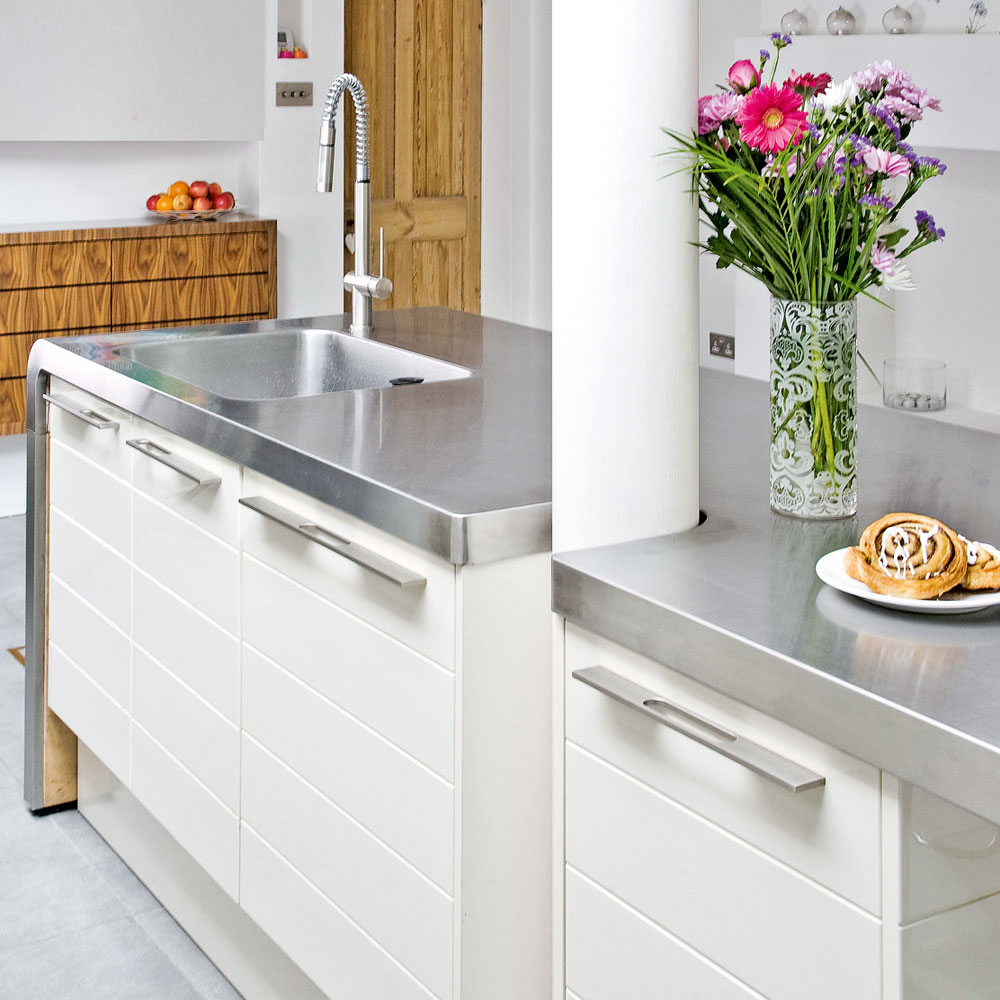
What is a stainless steel worktop?Durable, heat resistant, hygienic and impervious to water, stainless steel is an alloy of iron. The addition of chromium makes it resistant to rusting. Stainless steel is the restaurant kitchen favourite, ideal for creating the industrial aesthetic in your home. It works best in contemporary schemes, but you can team it with other materials to soften the look.
- Price: From approx £250 per linear metre.
- Best used :Around the sink, by the hob and in all food preparation areas.
- How durable is a stainless-steel worktop? Very strong, waterproof, heat and acid resistant. It is prone to scratching, but some say this adds to its well-worn appeal, and this won't affect its anti-bacterial qualities.
- Flexibility and fitting: Sinks can be incorporated into a stainless-steel run. Simple designs can be cut from a single sheet, avoiding the need for joints.
- Does stainless steel require any initial treatment? No
- How do I care for a stainless-steel worktop? Easily the choice of commercial kitchens because of its hygienic properties. It is very easy to keep clean with stainless-steel cleaner. Use baby oil to keep it looking at its shiny best.
10. Choose contemporary concrete worktops
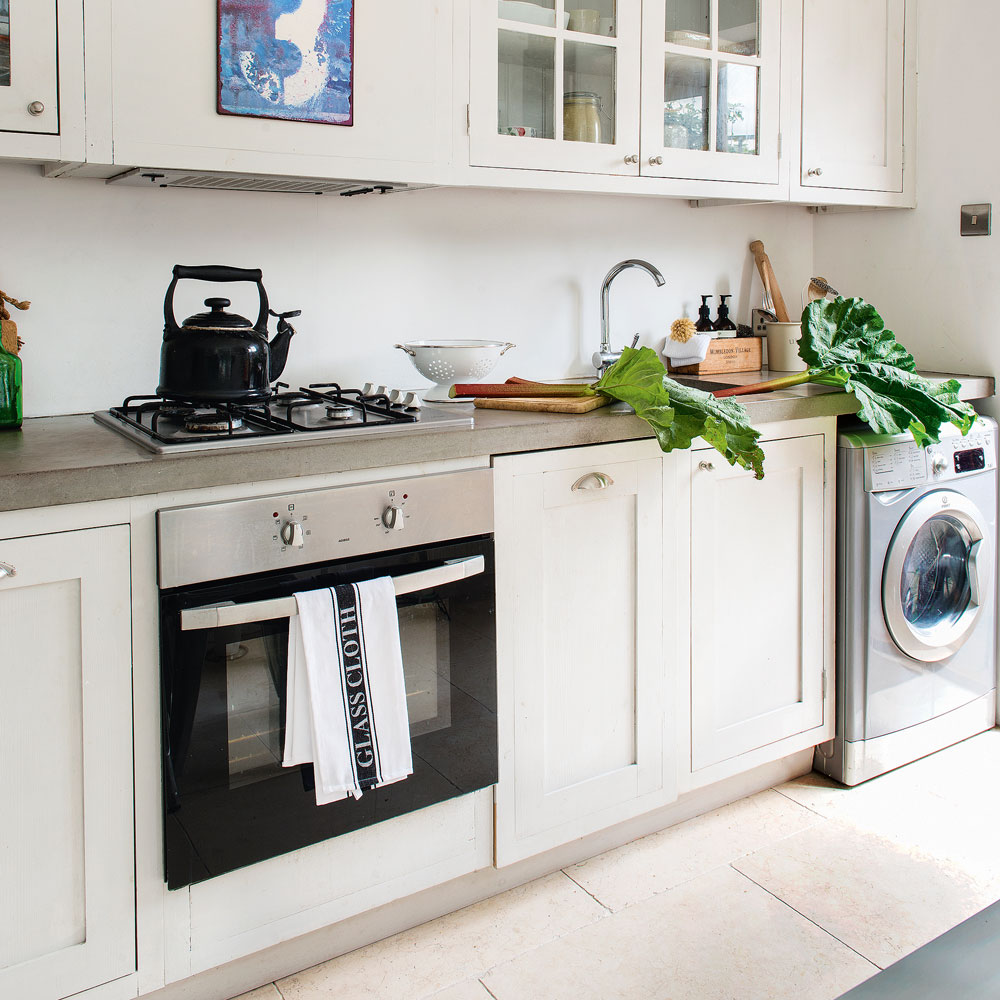
What is a concrete worktop? The industrial look of concrete makes it a current choice. It’s also designed to withstand plenty of heavy duty use, and comes in a range of standard concrete mix colours (from white to grey) and can be mixed with pigments for stronger colours. Polished concrete worktops are flat and smooth, but concrete is porous and can stain, and it is heavy so extra reinforcement may be required.
- Price: From approx £500 per linear m.
- Best used: General use, but always use chopping boards for food prep.
- Upkeep: If food is left on for a long period of time, it can cause staining. You may need a touch-up kit to minimise the appearance if this happens.
- Sealing required: You will need to use food-grade sealer or finishing wax to prevent water and stain absorption.
- Durability: Concrete is an incredibly durable material, but is also prone to scratching.
- Flexibility and fitting: Concrete is handmade and hand-finished, exhibiting natural beauty. It can be trimmed and moulded to suit most kitchens. It also works well for outdoor kitchens.
A new worktop is a big investment so don't be afraid to take your time choosing, visit showrooms and get a feel for each of the listed materials to see what best suits your needs. The kitchen is the heart of the home, therefore it's got to be right.
Choosing a worktop: Assess your budget
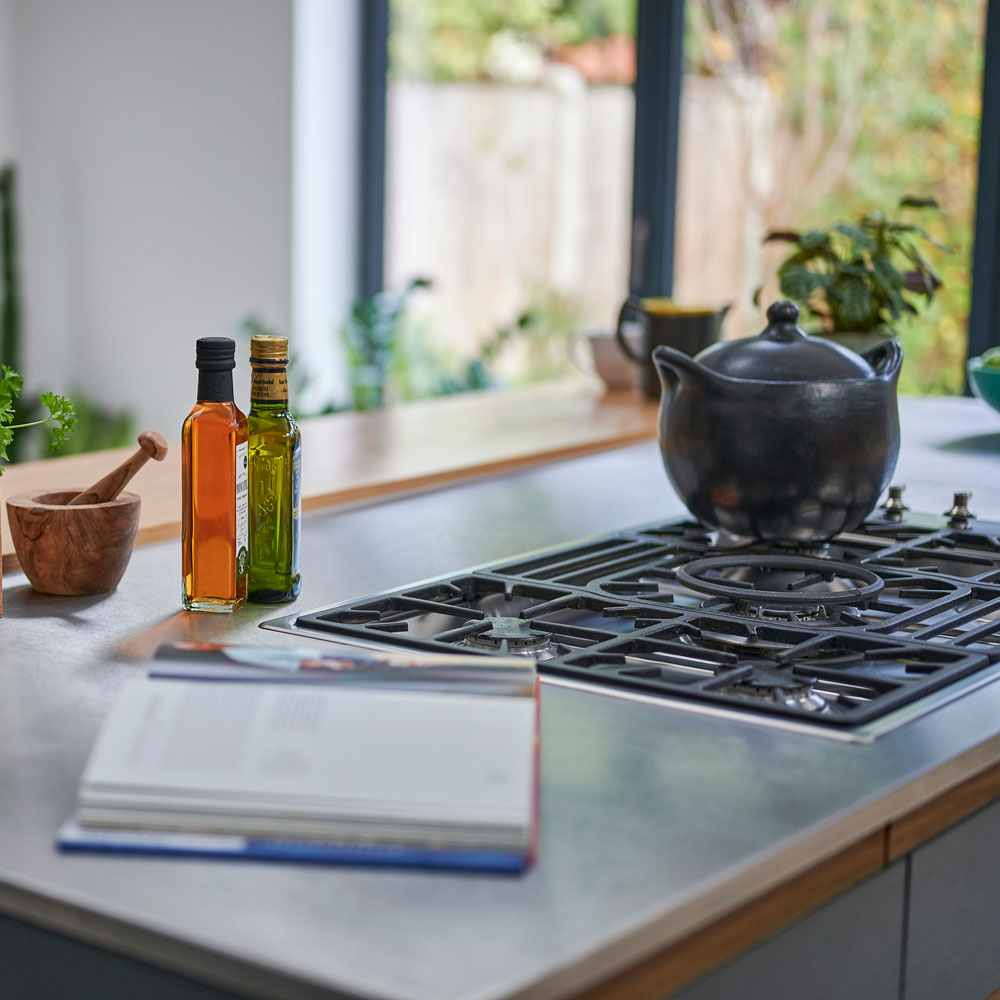
Worktops are available at a variety of price points – from cheaper laminates to expensive granites – and what you choose usually be driven by how much you have to spend. Cheaper options can be good idea but may not last as long more durable stones or composites.
If budgets are tight, try mixing and matching your worktops. Place panels of more expensive stone in harder working areas such as by the cooker or sink and wood or laminate everywhere. Combining worktops is on trend, too, so your kitchen will look very up-to-date.
Factor in any added costs. Usually stone composites, granite and some woods will need templating by an expert. Every cut-out you have, for a hob or under-mounted sink for instance, will cost around £80-100. Drainer grooves cut into stone by the sink will also cost extra.
'The best thing to do in your planning stages is to order lots of worktop samples' advises Hege Lundh at . 'Natural stone in particular can change in appearance depending on the lighting and you need to get a real-life impression of the stone to make your decision.'
Choose your profile

Your kitchen layout will help determine what worktop is best for you. For instance straight runs are cheaper and easier to fit, while seamless materials such as composites make sense if you have lots of corners.
The depth of worktop you choose can also alter the look of a kitchen. Thinner profiles of 10 or 20mm are still popular but thicker edges, created by adding a strip of the composite or stone to the front of the work surface creating edges of 50mm, are also having a resurgence. The standard thickness is 30mm.
Never underestimate the impact your worktop choice will have on the overall kitchen scheme. Along with the flooring, it sits on a horizontal plane, making it highly prominent, so it’s important to give it due consideration and not to view it as an after-thought.
Get the Ideal Home Newsletter
Sign up to our newsletter for style and decor inspiration, house makeovers, project advice and more.
Jennifer is the Deputy Editor (Digital) for Homes & Gardens online. Prior to her current position, she completed various short courses a KLC Design School, and wrote across sister brands Ideal Home, LivingEtc, 25 Beautiful Homes, Country Homes & Interiors, and Style at Home.
-
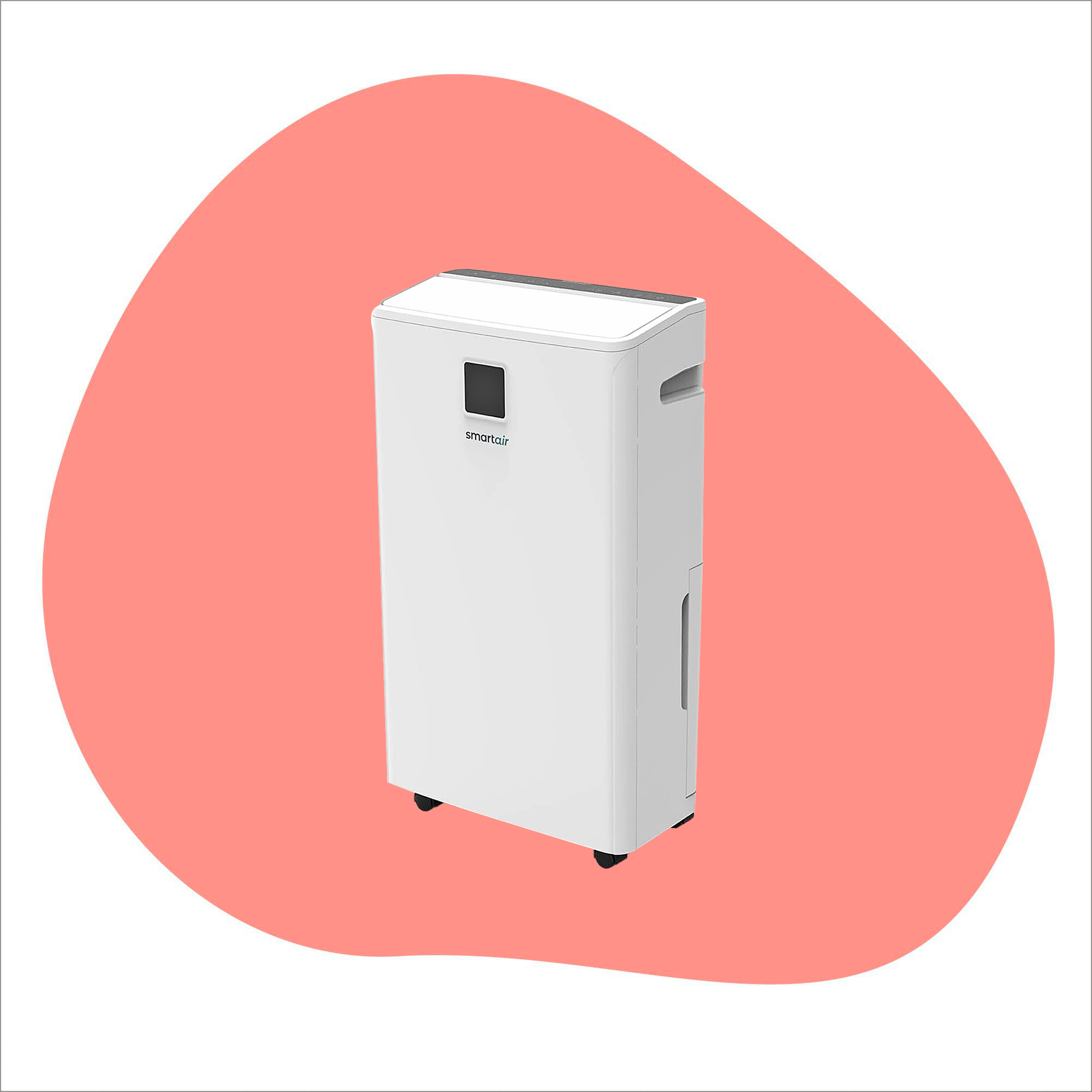 I tried out this neat little dehumidifier for a month – it dried my laundry in half the time
I tried out this neat little dehumidifier for a month – it dried my laundry in half the timeThe 20L SmartAir Dry Zone dehumidifier tackled my laundry drying woes head on
By Jenny McFarlane
-
 I’m seeing pastel garden furniture at all my favourite brands this spring, but QVC’s sorbet collection impressed me the most
I’m seeing pastel garden furniture at all my favourite brands this spring, but QVC’s sorbet collection impressed me the mostFresh pastel shades are a great way to liven up your outdoor space
By Kezia Reynolds
-
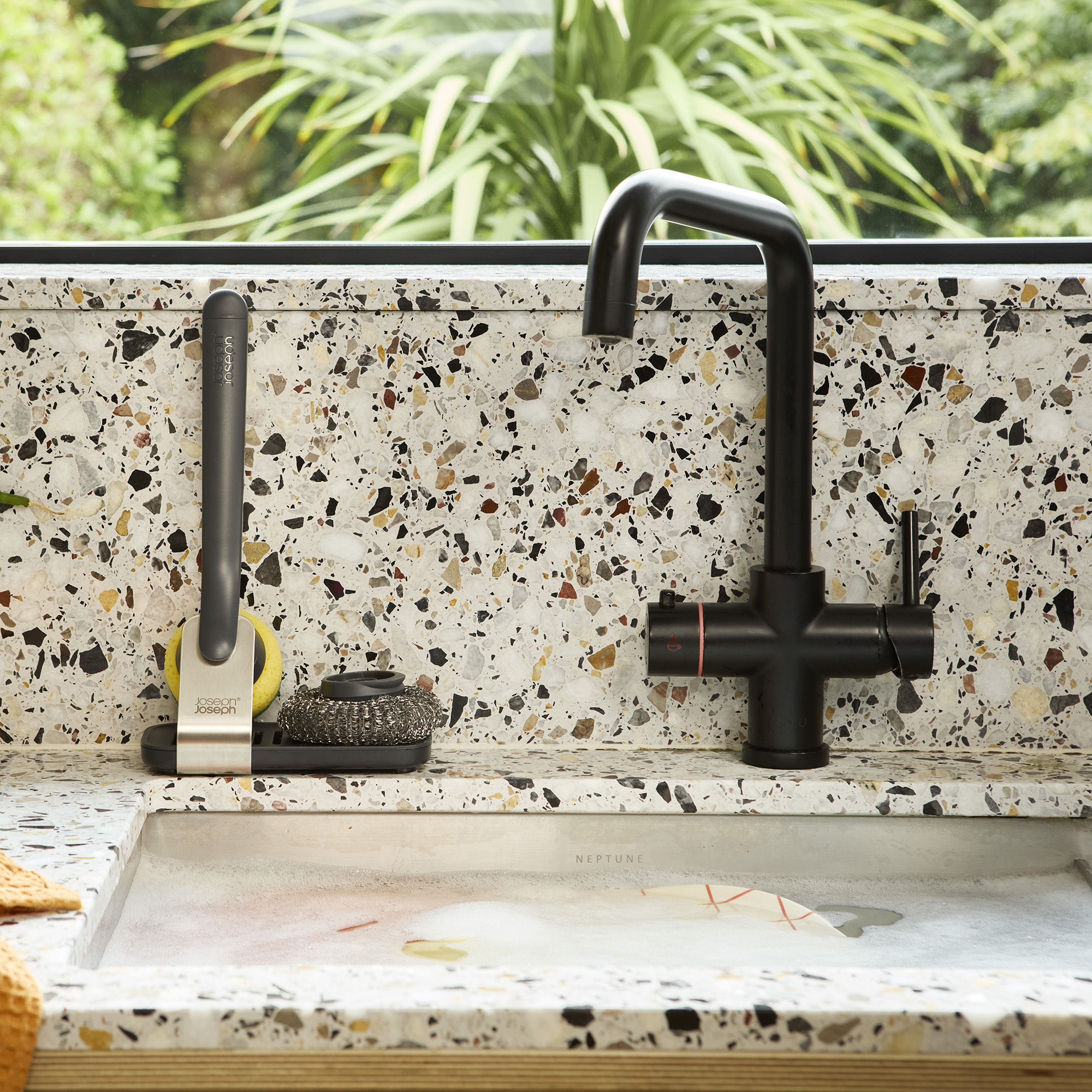 Don't tell my flatmates, but Joseph Joseph's clever new sink range finally made me enjoy washing up
Don't tell my flatmates, but Joseph Joseph's clever new sink range finally made me enjoy washing upI didn't know stylish washing up accessories existed until I saw this collection
By Holly Cockburn